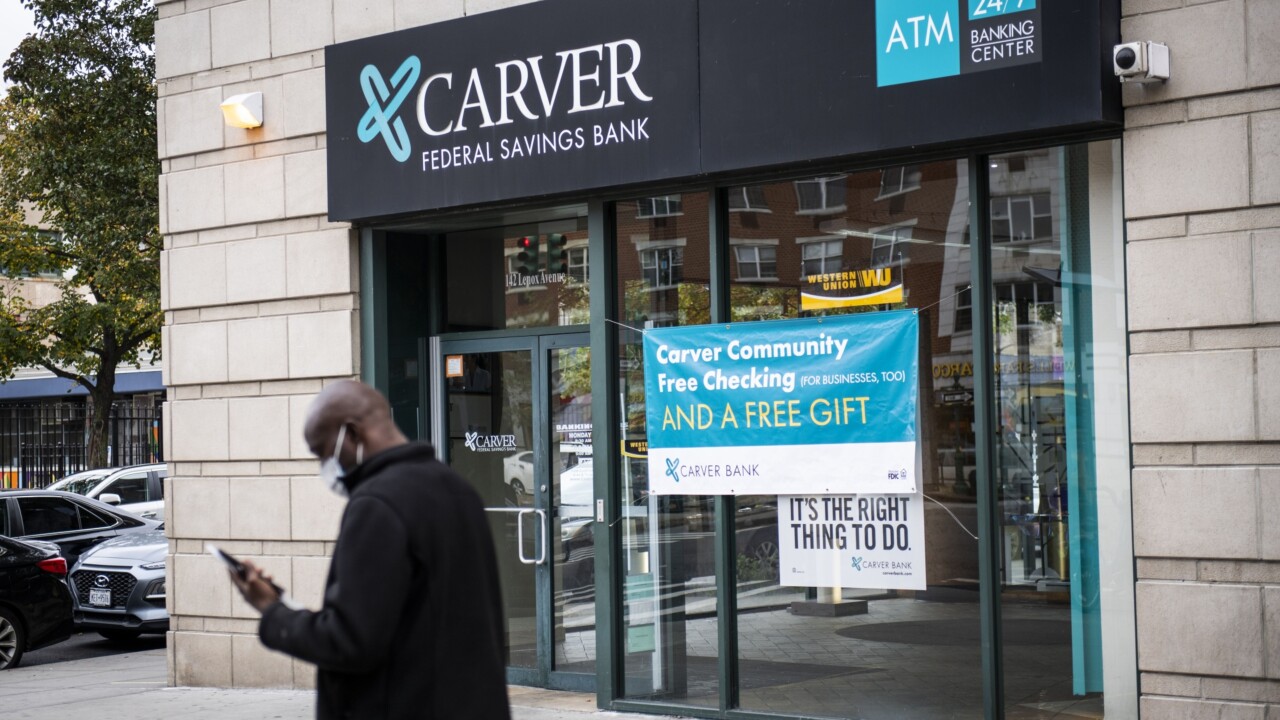-
More community banks are establishing credit card loyalty programs in their quest for revenue growth. The programs can work provided they are easy to understand, pay a lot of cash and tie rewards points to local services.
September 12 -
Community banks are once again considering offering credit cards after retreating from the product after the financial crisis.
July 24 -
The financial lure of credit cards has become increasingly hard to resist for regional banks that exited the business several years ago.
September 16 -
Wells Fargo, a longtime laggard in the ultracompetitive credit card market, has been developing two new credit cards with partner American Express. Executive Brent Vallat also explains how a new bankwide rewards program could help its credit card growth.
March 21
Some community bankers believe that issuing credit cards could go a long ways toward solving their fee income problems.
Banks that
"Every community bank should look at issuing credit cards," says Rusty Cloutier, president and chief executive of MidSouth Bancorp (MSL) in Lafayette, La. "It is the best money we've ever made."
Smaller banks should view card issuance as a "defensive play," says Brian Riley, senior research director at CEB TowerGroup. "Large national banks are still struggling with increasing their loan portfolios and community banks... may see those banks seeking to have relationships with their customers."
To be sure, card issuance can be a risky business line, though bankers can limit the risk somewhat by sticking to existing customers with proven track records, industry experts say.
Credit card portfolios seem to be holding up well right now from a credit perspective. The delinquency rate, or the ratio of borrowers at least 90 days late on general purpose credit cards,
The cards business usually performs well when delinquencies are around 3%, Riley says.
So right now is a good time for banks to consider getting into the business, says Andrea Perry, vice president in marketing and advisory services at Kessler.
"I do think it is a strong time for credit cards," Perry says. "From everything we have looked at in the near future, the credit card market will do well. I don't see anything to tell me otherwise."
Still, the business has its challenges. While consumer confidence has improved, people seem reluctant to run up high balances on their cards. Revolving consumer credit
Consumer advocates may view this development positively, Riley says. But for bankers, such stagnation could signal that the same consumers continue to carry debt they are struggling to pay off.
Risks exist, but Cloutier finds it hard to believe that banks that are willing to offer home equity lines, or make big commercial loans, are squeamish about credit cards. MidSouth has about 8,000 cardholders at $13 million in outstandings, he says.
"Why would a bank give a business a $5 million loan but not issue [the owner] a $40,000 credit card?" Cloutier says. "How can you be nervous about issuing more credit to a top-flight credit customer?"
Card issuance also serves as a natural way to offer another product to retail customers. And banks can diversify to reach different client segments.
Bank of Hawaii (BOH) in Honolulu reentered the card business last year with three different cards. The $14 billion-asset company offers a high-end American Express private client card, a rewards card for the average consumer and a travel rewards card through Hawaiian Airlines.
Bank of Hawaii has signed up more than 13,000 customers, says Peter Ho, the company's chairman and chief executive. The company wants "frequent revolvers who carry good balances," Ho says.
"We're tickled to be back in the cards business," Ho says. "It is an emotional product."
Credit cards tie "the customer to the bank," Cloutier adds. "We don't issue cards on the predatory lending side of the business... and we only issue to our customers. We're not trying to take business from mass issuers like Capital One."
Still, bankers should avoid overestimating the interchange income they will collect if they issue cards, Perry says.
Marketing and internal capacity are also critical if a bank expects any real card usage by customers. Odysseas Papadimitriou, chief executive of CardHub.com, told American Banker last year that it could take several million dollars for a bank to properly enter the business.
This is where some smaller banks can stumble. Bankers may have trouble developing a card that is competitive with other products and is regularly used by cardholders, industry observers say.
Banks can underestimate how much launching a credit card program will cost. Perry says it could take a bank three years to return a profit in the cards business.
"If the bank is estimating that they will be top of wallet and taking industry averages on spending... then they need to make sure they build a program that will get them there," Perry says.





